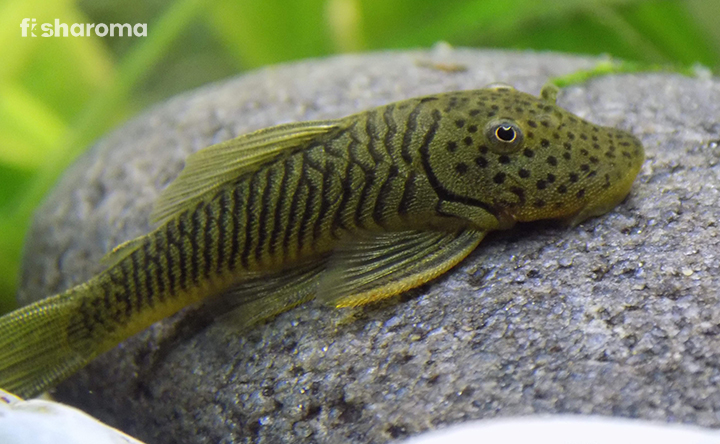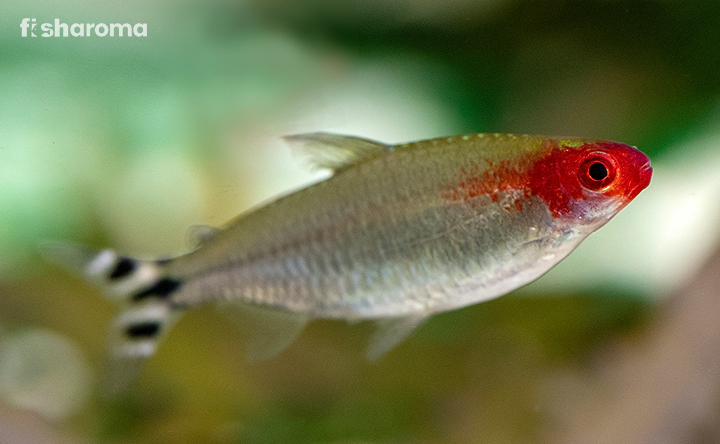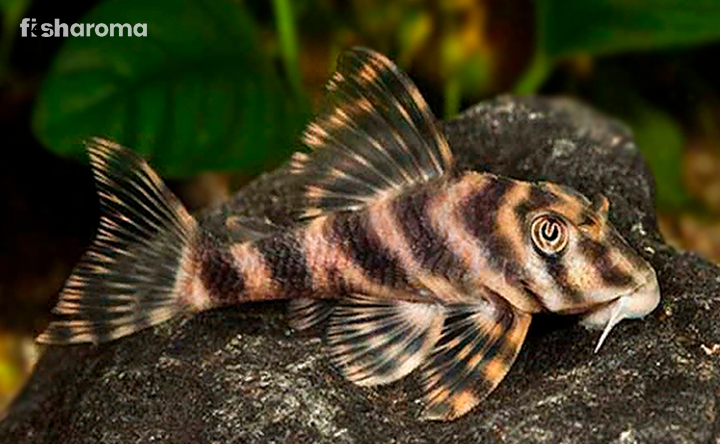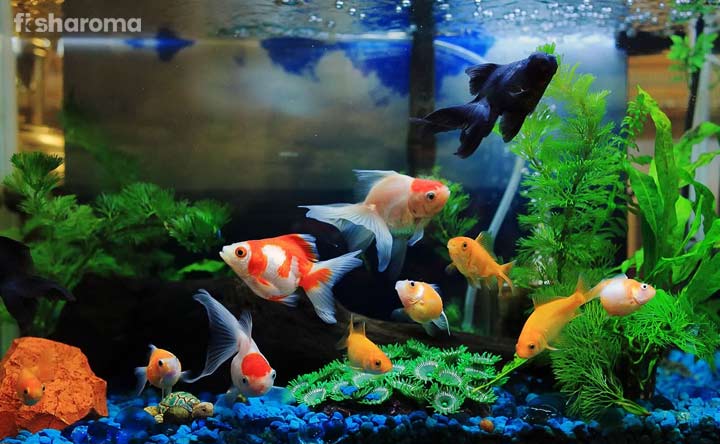American Flagfish: An Informative Take On Its Care Guide
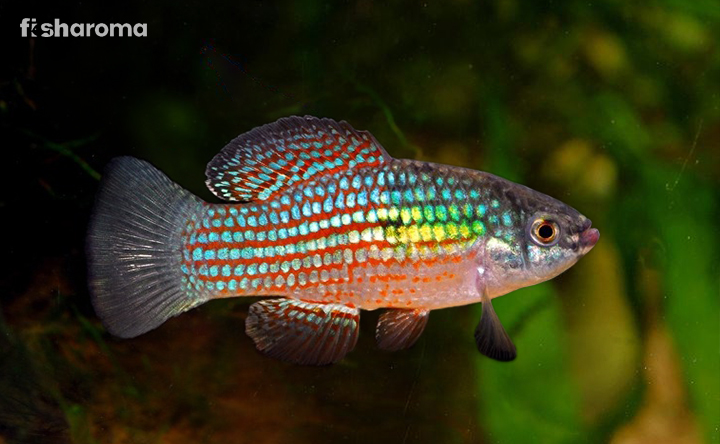
- Origin And Habitat Of American Flagfish
- Appearance Of American Flagfish
- Behaviour Of American Flagfish
- Lifespan Of American Flagfish
- Diet Of American Flagfish
- Tank Requirements Of American Flagfish
- Water Type For American Flagfish
- Compatibility Of American Flagfish
- Breeding Of American Flagfish
- Diseases Of American Flagfish
- Summary
American Flagfish, a variety of Killifish, is a small but hardy species. This is native to a particular country and there is no prize for guessing its name, right? Anyway, we will have plenty of opportunities to discuss that. The beautiful shades on its body and its ability to withstand a lot of changes in terms of water conditions, make this one a justified pet choice. Once you are well-acquainted with the caring aspect of this Flagfish, maintaining this will be a cakewalk, especially in a community fish tank.
Following is a cluster of the required information, we have curated so that keeping an American Flagfish doesn’t become challenging for you.
Key Specifications Of American Flagfish
The following table is a crux of the entire article and it is helpful to get an understanding of the species.
| Also Known As | Florida flagfish |
| Origin | America |
| Lifespan | 2-3 years |
| Colours | Yellow, green, and blue |
| Temperament | Semi- aggressive |
| Size | 2-2.5 inch |
| Diet | Omnivorous |
| Reproduction | Egg-laying |
| Maintenance Requirements | Moderate |
| Tank Size | 20 gallons |
Overview
It is believed to be discovered in the year 1879 and now it is scientifically called, Jordanella floridae. This is a freshwater fish and it belongs to the Cyprinodontidae family of Pupfish. Despite its small size, its colourful body and domesticated behaviour are the reasons why people are opting for it. These fishes can’t be called entirely peaceful, but that doesn’t reduce their popularity. They are comfortable staying in pairs or in big groups.
Origin And Habitat Of American Flagfish
It is indigenous of the American state of Florida and its wild distribution is around the Yucatan and Florida Peninsula, including Ochlockonee River basin and St. John River Basin.
American Flagfish’s natural place is in the ponds, backwaters, swamps, canals, marshes, and rivers, along with similar slow-moving water bodies. Their habitat is surrounded by heavy plantations and the water is muddy and dark.
Appearance Of American Flagfish
It is widely observed that captive-bred American Flagfishes are smaller than the wild one. Male fishes have more elaborated anal and dorsal fins than female ones, but all of their fins are rounded in shape. Also, female fishes are rounder than male fishes and both of their scales are kind of metallic in texture.
Size
The general size of an American Flagfish is 2-2.5 inches. Most of the fishes grow to be around 2.4 inches. You can always come across exceptional sizes of fish, but those shouldn’t be a standard parameter. Make sure that your fish is healthy, regardless of its size and shape.
Colour
The body of the fish is olive green with a light blue covering. Sometimes red dominance is also observed. During the breeding time, the male fishes become more vibrant, and their usual iridescence pattern is also more prominent, resembling the American Flag. So, now you know, that’s how the fish got its name.
Their fins might showcase a light red hue and female fishes have dark spots on their dorsal fin’s posterior part. The red hues are not present in every fish, rather they are found on some, and most of the fishes lack this feature.
Behaviour Of American Flagfish
The American Flagfish, being a type of Killifish, mostly swims through the upper or top level of the water and their inquisitiveness will prompt them to jump as well. Their aggression is well known, and they are famous fin-nippers, but if the fishes decide to showcase good mood, then they can easily live within a community fish tank peacefully.
Actually, when it comes to aggression, it is mostly the males, who turn to be territorial, but if there is no scarcity of space, then multiple males can be housed together. The rest of the time, they are actually peaceful, more so, when they find themselves in big groups of their own kind.
Lifespan Of American Flagfish
The American Flagfish generally lives 2-3 years in prime condition. There are cases when a single specimen has outlived the entire species’s standard lifespan and lived for 5 years. However, these are exceptional cases and shouldn’t be considered standard.
Diet Of American Flagfish
Let’s get this fact straight these fishes are big-time foodies and their algae take up most of their dietary requirements in the wild. So, while talking about their feeding habit, we must mention that they want algae profusely. If your tank is full of hair-like algae then you don’t have to think about their diet. If the situation is reversed, then provide algae wafers, algae tablets, vegetables like zucchini, cucumber, and peas to this famous algae-eaters.
In the wild, they are also micro predators and often prey on smaller crustaceans. In the tank set-up, you can provide live or frozen bloodworms, brine shrimps, white worms, tubifex, blackworms, and daphnia. Make sure you are not giving them more than they require because overeating can lead to multiple health ailments.
Some commercially available flake foods or other fish food are also great options for them. Overall you have to provide everything in such an order that their nutrition is ensured.
Tank Requirements Of American Flagfish
These fishes are active swimmers and watching them all day can be really entertaining. In order to achieve that, provide a sufficient tank with other tank conditions that will mentally and physically boost the fish. The colouration that the fish is famous for, will be showcased clearly if the fish gets its ideal setting, just like its natural habitat.
Tank placement is an important factor in this case and you have to place it strategically. Remember, the tank needs exposure to sunlight so that there is enough algae growth.
Tank Size
At least go for a 20-gallon tank for your American Flagfish, because their size might be small , but their immense swimming proclivity demands open swimming space. While a single fish can manage to stay inside a 10-gallon tank, we don’t recommend that at all. Keep them in pairs or with groups, bigger tanks mean happier fishes.
Tank Lid
We have mentioned in the behaviour section that these fishes are prone to jump out of the tank. So, a lid is a necessity to protect the fish. These super-active fishes swim mostly at the top and jumping is not at all difficult for them. Make sure your tank lid is well-secured all the time and without your vigilance, it shouldn’t be open.
Substrate
The substrate or the bottom of the tank should have a sandy or gravel base. Since these fishes are famous for their mystic hues, make sure that the sands or the gravels (whichever you choose as your substrate) is either black or any other dark shades. This way, there will be enough contrast as the dark backdrop will make their shades pop out even more.
Filter
This fish, despite its immense appetite, doesn’t produce much waste that needs frequent filtration. Still, it is better to go for a standard Air Powered Sponge Filter. It will also maintain the water current to be slow and low, because that’s how their habitat is.
Ornaments
American Flagfishes enjoy swimming around hiding spots, driftwoods and bogwoods. Make sure, even after placing all these things, the fishes have enough space left for swimming. Otherwise, these fishes can be stressed and there might be some territorial aggression between males.
Presence Of Flora
The tank should be heavily planted because that is what they are accustomed to seeing around them. American Flagfishes extensively eat aquatic plants, so that might be a concern. So, you need to keep more plants than they actually eat. This is related to their diet and you have to ensure that you are giving them enough plant-based or vegetable-based food so that they don’t get to eat much of the plants. Whatever plants you use, they need to be strongly anchored at the bottom.
Having deep plantations is effective if there are two male fishes staying together inside a tank. The less they get to see themselves is better for their mood, so it will keep their aggression at check.
You can keep Java Moss inside the tank.
Lighting
This is an important part of your tank set-up as proper aquarium-friendly lighting will highlight the vibrant fishes. Be innovative and don’t forget to experiment with your tank lighting.
Cleaning Method
Since these fishes consume algae, to the point where the tank looks clean, you need to look for additional things for cleaning. Ensure from your end that there is no excess food decaying inside the tanks. You should keep the tank glass clean by wiping it with a soft towel. This method should be followed at least once in every two weeks.
You need to change the water partially and gradually and make sure your fishes are comfortable with every water change procedure. Follow this weekly or biweekly for a healthy tank environment.
Water Type Of American Flagfish
American Flagfishes come from areas where the water moves slowly, and you have to keep that pace in your tank as well. Same goes for the temperature, although these fishes can endure a wide range of temperatures. The water needs to be acidic, alkaline and similar to their natural habitat.
Temperature
American Flagfishes are comfortable in 15-29 Degrees Celsius. Anything in between is good for them as they don’t make any fuss about the ideal setting.
pH Level
The pH level of the water should range between 6.2-8.2.
Hardness
The required general hardness of the water should be 6-20 dGH.
Salinity
This fish can tolerate saltwater environments, but that is only when the salinity is between 1.001-1.005.
Compatibility Of American Flagfish
American Flagfishes are peaceful but fast, rather, energetic swimmers and they do well with similar-natured fishes. Their behaviour with other fishes is still unpredictable, but you can keep them in groups. They are more than happy when they stay with their big groups, just make sure there is enough space for each fish. Otherwise, there might be territorial aggression between two males, as discussed above.
Suitable Tank Mates
Rummy Nose Tetra, Neon Tetras are ideal tank mates for such American Flagfihses. All these are colourful species and they look good together. Also, their swimming speed is somewhat the same and so is their nature.
Unsuitable Tank Mates
Slow swimmers fishes are not compatible with American Flagfish, because the latter might be fin-nippers. Also, the Flagfishes might harass the other ones if they don’t get along well. You should never keep any kind of Betta fishes and Guppies along with these ones.
Breeding Of American Flagfish
For successful breeding make sure you are maintaining the water parameters in a proper way. The water temperature needs to be around 22 Degrees Celsius. There should be enough aquatic plants that can be used as hideouts for breeding female fishes. Male fishes are over-enthusiastic and females would prefer some alone time to recuperate their body strength between two spawnings.
During the spawning time, the male fishes would like to win the attention of the female by making some backward flips. Afterwards, both of them attach themselves with each other and then the female fish lays eggs. While males do have the protective instinct females are not known for anything of that kind. So, separate your female fishes immediately and let the male fish stay with the eggs for around a week. You will notice how the fish fan the eggs with its fin during the time.
After this, the eggs will hatch and new “Fry” or baby fishes will appear and they can consume brine shrimps and microworms. They prefer to hide most of the time, if they are inside a community tank, but after a certain phase, they will come back to their natural self.
Diseases Of American Flagfish
The American Flagfish may not commonly fall sick, but to maintain the reputation you get to be careful. If the tank is clean and the fishes are fed well, they are unlikely to be susceptible to illnesses.
Despite that, some bacterial or parasitic infection can trouble the fishes, and you need to quarantine if you see any of your pet fishes is suffering from this.
Summary
The American Flagfish, bearing the name and resemblance of the country’s prestigious Flag, is an interesting species. Being a member of the Killifish family, these are getting popular amidst fish enthusiasts. Their super adjusting power is also praiseworthy, just like their majestic hues and sturdiness. They are active and can easily enhance the look of any fish tank, if kept in groups. The colours, agility, and enthusiasm of the American Flagfish are best exhibited when it receives both mental and physical nourishment.
Like this article, we carefully provide information in our other articles as well,
Similar Care Guides
- Dragon Wrasse – The saltwater species has two completely different looks, one for its juvenile state, and the other for its adult phase. Both are vibrant, and the nature of the fish is also magnificent.
- Black Ruby Barb – The Barb fish looks spectacular with its contrasting red and black combination. This tiny fish, with a maximum of 2 inches, always entertains the owners.
- Snowball Pleco – This is a small but beautiful fish, with polka-dotted patterns all over the body. The nocturnal fish exhibits a pair of whiskers, making its look even cuter.

